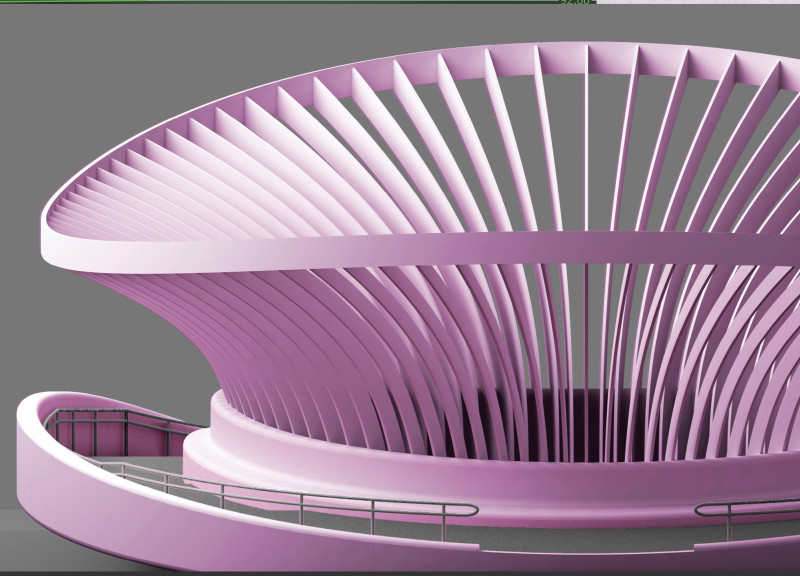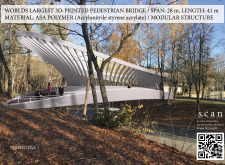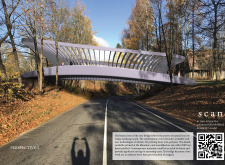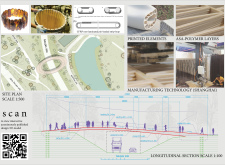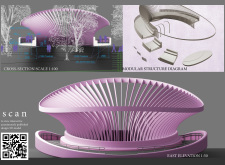5 key facts about this project
The world’s largest 3D-printed pedestrian bridge is located in the Gauja Landscape Park, along Gaujas iela. Spanning 28 meters and measuring 41 meters in length, it serves as a pathway for pedestrians while showcasing a design inspired by the natural environment. The structure connects technology with artistic expression, enhancing both accessibility and the experience of the landscape.
Design Concept
The bridge presents a bionic form that mimics the natural shapes found in its surroundings. This aspect of the design reinforces a sense of harmony between the built environment and the landscape. By using organic lines and contours, the bridge draws attention to the relationship between architecture and nature, creating a space that invites exploration.
Materials and Construction
The bridge is constructed using ASA polymer, known for its resilience and weather resistance. This choice of material supports the bridge's durability, ensuring it can withstand changing weather conditions. Additionally, the integration of Carbon Fiber Reinforced Polymer tendons enhances structural strength while keeping the bridge lightweight and efficient.
Construction involves fabricating components in a laboratory before assembling them on-site. This modular approach simplifies the building process and allows for precise construction. It establishes clear advantages in both speed and accuracy, reflecting current trends in modern building techniques.
Sustainability and Lifecycle
Sustainability is an important factor in the design, with a focus on using materials that can be recycled in the future. This consideration aims to reduce environmental impact and lower life-cycle costs, aligning with broader efforts in the field of architecture to promote sustainability.
The bridge’s flowing lines and careful details invite close observation, showcasing the practical uses of 3D printing technology. Each aspect interacts with light and shadow, adding depth to its visual appeal.


